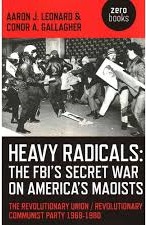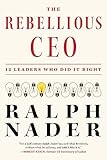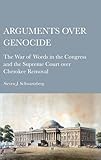We should go to the masses and learn from them, synthesize their experience into better, articulated principles and methods, then do propaganda among the masses, and call upon them to put these principles and methods into practice so as to solve their problems and help them achieve liberation and happiness.
— Mao Zedong ((Mao Tse-tung “Get Organized!” 29 November 1943. Selected Works, Vol III, p. 158 from marxists.org)) (p. 106)
According to the above translation, it appears as though Mao sees himself and his Chinese Communist Party (CCP) comrades as outside the masses. That, however, is inconsequential to the fact that Mao seeks to immerse himself and the CCP among the masses and seek direction from them. It is bottom-up rather than top-down.
But that is not how most of the world operates today.
Capitalism is a system set up for and at the behest of elitists/bourgeoisie/1 percenters — whichever parlance one prefers. Capitalism is a system that enriches 1 percenters and immiserates the masses, and it uses the weakest members of the masses to enforce and maintain the system through policing and waging its wars.
Obviously some will see the system for what it is and seek to overturn such a fundamentally unjust establishment. The 1 percenters know that, and they take steps to guard against any potential revolution. Knowledge is power, and the 1 percenters seek control through keeping their politicians in decision-making positions — of critical importance is education/indoctrination. Another key lever is ownership of mass media.
It is a well documented fact that the CIA manipulates currents events, narratives, and the historical record through disinformation and propaganda supplied by colluding mass media and unscrupulous journalists.
 Nonetheless, there have been and continue to be movements that attempt to organize the masses for an overthrow of capitalism. One such groupings is the Maoists. Authors Aaron J. Leonard and Conor A. Gallagher examine the history of Maoists in the United States and the state’s spying, infiltration, and dirty tricks against leftist revolutionary organizations in their book Heavy Radicals: The FBI’s Secret War on America’s Maoists — subtitled The Revolutionary Union / Revolutionary Communist Party 1968-1980.
Nonetheless, there have been and continue to be movements that attempt to organize the masses for an overthrow of capitalism. One such groupings is the Maoists. Authors Aaron J. Leonard and Conor A. Gallagher examine the history of Maoists in the United States and the state’s spying, infiltration, and dirty tricks against leftist revolutionary organizations in their book Heavy Radicals: The FBI’s Secret War on America’s Maoists — subtitled The Revolutionary Union / Revolutionary Communist Party 1968-1980.
Leonard and Gallagher write how “state authorities … responded proactively in order to undermine, fragmentize, and neutralize such [anti-establishment] forces—systematically breaking laws they were ostensibly sworn to uphold in the process…” (p. 12)
The authors focus on the Maoist oriented Revolutionary Union (RU) which in a later related incarnation became the Revolutionary Communist Party Marxist-Leninist (RCP).
The RU appealed to workers. A RU publication, for example, held:
A strike, when it is not a token tactical ploy in ‘labor management relations,’ is in many ways like a miniature revolution. Struggle, instead of collaboration, is the order of the day. (p.64)
The Maoists presented a different, first-hand take on how the revolution was unfolding in China. For instance, a great famine during 1959-1961 has been highlighted by many critics of Communist China as a failing of Communism. Leonard and Gallagher addressed this depiction by referring to William Hinton’s book Fanshen on agrarian reform in China that noted: “its description of the suffering during the years before the Communists came to power, particularly in relation to famine. It showed a China in which mass starvation was not a rare event, but a standing condition.” (p. 113)
The FBI, not surprisingly, considered Hinton’s book as “subversive.” (p.116)
The FBI saw the RU emerging from a “conspiratorial interaction between [RU leader Leibel] Bergman and the leadership of the Chinese Communist Party.” (p. 121)
However, it would prove to be insufficient to maintain a fidelity with the CCP when the RU’s domestic solidarity-building was so challenged. While supporting Black movements, the RU was unsure whether to include Black movements within the RU. (p. 144) Dissension was also created among leftist ranks by RU opposition to school busing to overcome racial segregation. (p. 159)
Nationalist were also eschewed, as the RU considered all nationalism as “bourgeoisie ideology. In the ideology of ‘my nationality first’ which reflects and serves the interests of the bourgeoisie of the particular nationality.” (p. 144)
Some successful organizing occurred on campuses; the RU helped establish the Attica Brigade for expanding influence. (p. 174-175)
A major party plank was being anti-war; the RU expanded involvement with Vietnam Veterans Against the War. (p. 175-177)
In 1975 the RCP was founded. It “had at its core the Marxist dictate of seizing the means of production…” (p. 185) Crime would be dealt with through a living wage. (p. 186)
The RCP, however, did itself no favors among social justice advocates when it aligned with a need to reeducate homosexuals. (p. 186)
Maoist China was also splittist, forming an alliance with US against the USSR while — at the same time — seeking alliance with revolutionary movements throughout world.
Despite all the external tumult, the RU/RCP would have been hard pressed to survive FBI chicanery and malevolent police actions. (p. 227, 239)
Heavy Radicals ends noting the “good things”: “the daring to conceive of a socialist society as a fundamental negation of the rapaciousness of capitalism, a renouncing of American exceptionalism and a willingness to call out the crimes of the US government rather than making accommodation with them, the feeling that the dispossessed need to be brought into the center of the levers that run society.” (p. 246)
The RU/RCP sought to build a mass consensus targeting workers and students, in particular. Although Mao’s words appear to advocate a bottom-up orientation, he held his spot as chairman of the CCP for his entire life post-revolution. The RU/RCP was also hierarchically organized. (p. 207) Heavy Radicals conveys the dangers of too much power concentrated in leadership, as leadership vanities and infighting on the Left — “in the most unkind terms” (p. 212) — led to a disintegration of unity among would-be revolutionaries.
Solidarity was further disrupted by the Stalinist split, the rupture in China after the death of Mao, and state-informant infiltration among the Maoists.
Herein lies the historical take-home lessons from Heavy Radicals for future revolutionaries. Chief among them is the sine qua non of solidarity. The movement much be led by the masses, and it must be a principled movement that is inclusive of all humans. The 1 percenters will not desist from using whatever means to undermine solidarity and maintain the capitalist system that serves their needs while failing so many other humans. Solidarity is absolutely needed to overcome this classism and the greed and supremacism that drives it.










